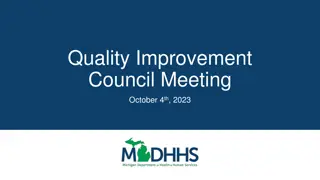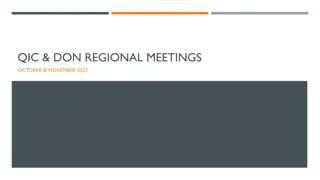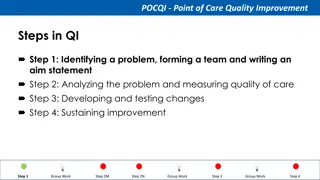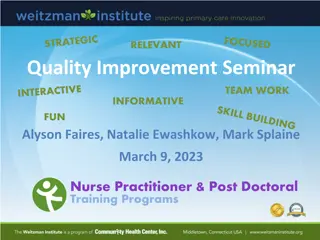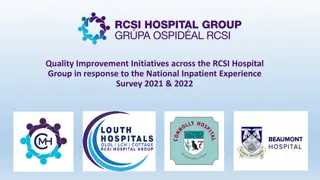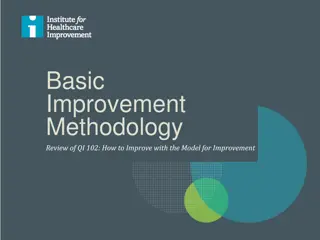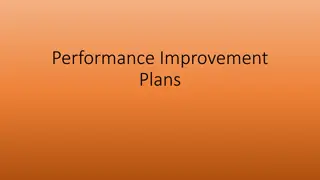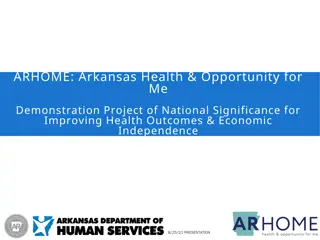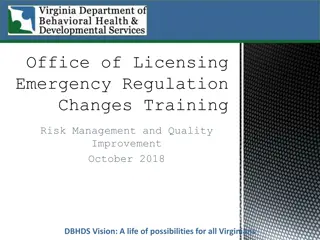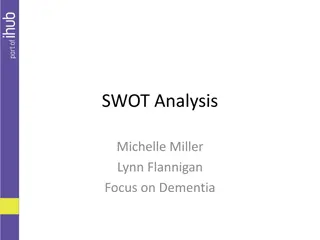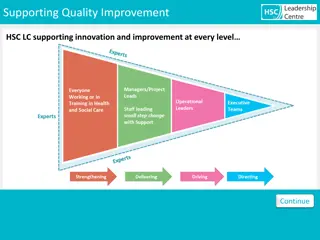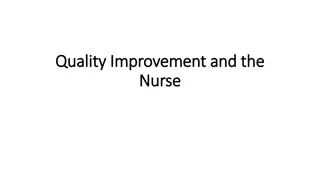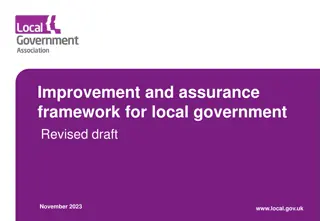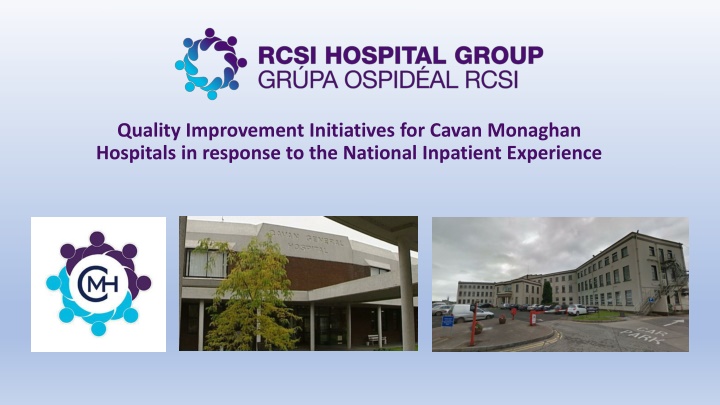
Improving Communications with Patients and Families in Cavan Monaghan Hospitals
Enhancing communication with patients and families at Cavan Monaghan Hospitals through a Quality Improvement Initiative in response to restricted visiting during Covid-19. The initiative includes contacting families within 12 hours of admission, resulting in a 41% reduction in complaints related to communication. Plans include spreading the program hospital-wide and implementing the National Healthcare Communication Programme.
Download Presentation

Please find below an Image/Link to download the presentation.
The content on the website is provided AS IS for your information and personal use only. It may not be sold, licensed, or shared on other websites without obtaining consent from the author. If you encounter any issues during the download, it is possible that the publisher has removed the file from their server.
You are allowed to download the files provided on this website for personal or commercial use, subject to the condition that they are used lawfully. All files are the property of their respective owners.
The content on the website is provided AS IS for your information and personal use only. It may not be sold, licensed, or shared on other websites without obtaining consent from the author.
E N D
Presentation Transcript
Quality Improvement Initiatives for Cavan Monaghan Hospitals in response to the National Inpatient Experience
Improving communications with patients and their families A Quality Improvement Initiative in Cavan Monaghan Hospitals Introduction Restricted visiting during Covid-19 resulted in an increased number of complaints from patients families, who voiced dissatisfaction that they had not received adequate information about their family members when they were in hospital. Nursing staff commenced a ward-based initiative to communicate with families following admission. Due to the recommencement of hospital visiting the initiative has been adapted to ensure families are spoken to either by phone or face to face within 12 hours of admission. This initiative is spreading across the hospital along with multidisciplinary communication programmes being delivered. This QI initiative is aligned to Aim: To improve communications with patients and their families during their hospital stay. NIES Theme-Admission and Care on the Ward, HIQA Safer Better Healthcare standards (2012) of Person-Centred Care & Support, Local hospital concerns regarding communicating with relatives during periods of no/restricted visiting. Project 1. Communication with patients families within 12 hours of admission to the ward Communication initiative Results 41% reduction in complaints received relating to communication between January 2022 and June 2023 An initiative to communicate with patients family by phone or in-person within 12 hours of admission commenced on a medical ward in 2021 and has been sustained. A standardised approach to the conversation is used to ensure relevant information is provided with the opportunity for family to add information and ask questions .(See Communication Initiative guidance as displayed on ward). Compliance is measured quarterly by sample audit (Q1 88%, Q2 89% of patients families where communicated with within 12 hours). The initiative has spread to two additional wards to date with plans to spread hospital-wide. Let s Talk to our patients, to their families, to our teams. Our aim is to contact vulnerable patients families Within 12 hrs of admission to the ward Let your patient s communication needs be known: at handover, at whiteboard MDT, at Safety pause Next Steps 1. Continue to spread project 1 Project 2. Implementation of the National Healthcare Communication Programme (NHCP) Explain to patient and gain consent % of relatives who received a phone call within 24 hours of admission across all wards Emergency Department Multidisciplinary Team trained on Module 1 of the NHCP in June 2023 (106 healthcare staff attended) Take time to prepare for phone call- what info will you give, what do you want to find out 2. Analyse the impact of project 2 100% on patient satisfaction with their 90% Stay focused redirect conversation to give/get required information. experience of communication. 80% Module 1 delivered to all nursing staff as part of the new-staff induction programme. Survey of patients experience of communication in ED pre and post training in progress. Survey of staff experience of training in progress. 70% 3. Use the results of surveys to Take notes if needed 60% plan next phase of delivering NHCP 50% Always feedback to patient for example, I just spoke to your son John, he is concerned about x,y,z.. 89% 88% Role out of this novel approach to multidisciplinary training per specialty will be planned following analysis of patient and staff feedback module 1 to additional specialties. 40% 67% 30% 4. Continue to measure rate of 20% Project 3. New initiative complaints re communication on Link with members of MDT share information 10% 0% wards and departments #Pull up a Chair to improve communication with patients, a NHCP initiative will commence in ED in 2024 Now you Know your patient better and the patient with their family knows the plan of care 2022 QI Q2 2023 undertaking QI s. 2023
Implementing Safer Discharge in Cavan Monaghan Hospitals A Quality Improvement Initiative Introduction Discharge planning is a complex process for healthcare staff and the solution is multifactorial. A QI initiative commenced in 2022 initially with the aim of all patients having a Predicted Date of Discharge (PDD) on admission. Aim: To reduce time from confirmation of discharge to the time the patient leaves the ward on a medical ward as part of the Safer Discharge initiative This QI initiative is aligned to; NIES Theme-Admission and Care on the Ward, Q40, Q41, Q43, Q47, Q48. Plan Do Study Act cycle 1 Initial Change Intervention a PDD to be allocated at Consultant ward round within 24 hours of admission PDD to be discussed at MDT daily meetings PDD recorded in the patient s healthcare record. A drive to promote the allocation of PDD during ward rounds on one ward commenced and worked well. It led to better awareness and planning of discharge within the multidisciplinary team. Plan Do Study Act cycle 2 Commenced August 2023 HIQA Safer Better Healthcare standards (2012) of Person-Centred Care & Support, Process for non-complex discharges Local hospital-concerns re: late notification of discharge, delayed access to bed capacity and complaints regarding discharge process Patients on one ward to have their discharge confirmed at 8am ward round Appropriate patients to transfer to Transit Lounge (TL) by 11am Discharge documentation (prescription & GP letter) will be completed in TL Ward bed available to accept patients from ED earlier in the day Weekly meeting to identify potential and planned weekend discharges by NCHD's and CNM's to enable decisions and planning of discharges, timely communication with patients and family regarding discharge, increased bed capacity and reduce wait time for patients in ED. Next Steps 1.Measure compliance with process changes for non-complex discharges and the impact on patient wait times in ED. 2.Complete audit of compliance with policy for planning of complex discharges to identify gaps in the process 3. Plan QI interventions to streamline the discharge pathway for patients Challenge The level of planning required for patients with multiple discharge needs can lead to inaccurate PDDs. Solution The QI team decided to focus on earlier discharge times on the day of discharge. An audit revealed that reduced times of departure from the ward impacted directly upon those awaiting admission in the Emergency Department. The main cause identified for the delay in patients leaving the ward is the wait for prescription and GP letter completion. Process for complex discharges Audit compliance with the process for discharging patients with complex care needs as outlined in the hospital Admission and Discharge policy
Improving education provided to patients during the inpatient stay and on discharge about their medications IntroductionResults from the National Inpatient Experience Survey 2022 found that we need to provide clear information about medications prior to discharge. A multidisciplinary improvement team was established in January 2023 to work on improving medication education on discharge. A pilot ward was identified and work commenced to drive this initiative. This QI initiative is aligned to NIES. Q44:Did a member of staff explain the purpose of the medicines you were to take at home in a way you could understand? (Score 7.3, Nat Ave. 7.9). Aim: To provide information to patients about their new (or changed) medications, in a way that they can understand. Q45:Did a member of staff tell you about medication side effects to watch for when you went home?This was one of our lowest ranking questions. (Score 5.2, Nat. Ave. 5.4). Plan Do Study Act cycle 1 Plan Do Study Act cycle 2 1. Consultants to review patients drug kardex at each ward round and explain changes in medication to their patient. Consultant/team to record in the HCR any change to the medication prescription and rationale for same. Nursing staff to educate the patient on new medications when dispensing new medication. Nursing staff to print medication information leaflet and give to the patient as medication changes are being made throughout their inpatient journey. Pharmacist will also educate the patient and provide information leaflets when completing medication requisitions. 1. CNM to prompt Consultants to explain medication changes to patients and document rational in medical notes. 2. Quality manager, Consultants, CNM s, and Clinical Pharmacist to give education sessions at medical journal club and grand rounds to create awareness of this QI with NCHDs. 3. Clinical Nurse Facilitator to educate staff nurses on their role of patient education. 2. 3. Results PDSA 2 4. 11 medication charts reviewed 72 changes were found in the medication chart 34/72 (47%) changes were noted in the healthcare record 9/72 changes(12.5%) had rationale noted in HCR . 5. Results- PDSA 1 Plan Do Study Act cycle 3 7 patients medication charts were reviewed 28 changes found in the Medication Charts 60% (n=17) of which had been documented in the HCR The rationale for change of medication was included in 7 changes (overall 25%) 1. Trial a ward-round template sticker in the medical record to standardise information documented re changes in medications and rationale (See ward round/Patient Review Proforma). 2. Continue to educate and support nursing staff to provide education to patients on new or changed medications.
Improving communications with patients families A Quality Improvement Initiative in Cavan Monaghan Hospitals (2021) Introduction Restricted visiting during Covid-19 resulted in an increased number of complaints from patients families (including formal complaints), who voiced dissatisfaction that they had not received adequate information about their family members when they were in hospital. The nursing team on a medical ward commenced an QI initiative in October 2021 to improve communications with patients families. Aim: To improve communications with patients families during their hospital stay on a medical ward Project Plan 1. MDT Brainstorming session on causes of complaints, challenges for staff communicating with families and identify change ideas. 2. Developed a multidisciplinary communications booklet to document communication between staff and the patient s Designated Contact Person (DCP). 3. Guidance on GDPR for staff when relaying patient s information to DCP. 4. Focused Communication training for ward staff. This QI initiative is aligned to: 1. NIES Theme-Admission and Care on the Ward, 2. HIQA Safer Better Healthcare standards (2012) of Person-Centred Care & Support, 3. Local hospital concerns regarding communicating with relatives during periods of no/restricted visiting. PDSA 1. Nov 2021 Trial a MDT communications booklet to document communication between staff and the patient s DCP. Result Multidisciplinary Booklet was not a sustainable long-term solution due to existing paperwork demands. Concept of DCP established. GDPR/ethical obligations clarified. Next Steps PDSA 2. Mar 2022 Implement a daily process for MDT staff to discuss communications with DCP at staff handover, MDT Whiteboard huddle and safety pause. 1. Re-evaluate in September and monthly until embedded 2. Measure rate of complaints re communication for the pilot ward and across hospital once spread and embedded 3. Complete family survey by Dec 2022 to determine if initiative is addressing needs of patients families 4. Document communication interactions in the nursing notes % of Relatives who received a phone call within 24 hours of admission Result June 2022 Family experience survey found 88% satisfaction with the level of information received from nursing staff on the ward. 80% 73% 67% 70% PDSA 3. August 2022 1.Each patient s DCP will be contacted by a member of the nursing team within 24 hours of their admission. 2.The NOK will be informed of patients clinical status, plan of care and relevant information re: ward visiting, contact number, discharge plan etc. 60% 50% 40% 29% 29% Result 67% of patients DCP were communicated with within 1st 24 hours 30% 20% Spread July 2022 1. Spread to all wards, support with education. 2. Audit in Aug of 4 wards showed an average uptake of 50% . 3. Continue to drive this initiative and re-audit in September. 10% 0% Ward 1 Ward 2 Ward 3 Ward 4
Implementing Safer Discharge in Cavan Monaghan Hospitals A Quality Improvement Initiative (2021) Introduction Discharge planning is a complex process for healthcare staff and the solution is multifactorial. Data from Quality Care Metrics (QCM) historically demonstrates that the Predicted Date of Discharge (PDD) on admission is not well recorded in the patient s healthcare record and that there is a perceived reluctance to document PDD among some members of the team. An MDT team was established to focus on this phase of the discharge planning process. Aim: To improve the discharge planning process for patients and their families on a medical ward by identifying a Planned Discharge Date (PDD) within 24 hours of admission. Change interventions % patients with a PDD within 24 hours PDSA 1. Mar 2022 To discuss PDD for all patients and add to the white board in the Pilot Ward. This initiative commenced in July. 100% 80% 60% 40% 20% 0% May July Aug Findings Discussing and recording the PDD requires constant reinforcement. It can be difficult to predict some patients PDD if they are clinically unstable or a complex discharge. This QI initiative is aligned to: NIES Theme-Admission and Care on the Ward, Q40, Q41, Q43, Q47, Q48. Result In April a snap-shot audit showed 20% of patients had a PDD. HIQA Safer Better Healthcare standards (2012) of Person-Centred Care & Support, Local hospital-concerns re: late notification of discharge, insufficient referrals to the discharge lounge. PDSA 2. Aug 2022 To involve MDTs in reviewing the appropriateness of the date whilst incorporating the complexity of the patient. Next Steps 1. 2. Evaluate the impact of PDD on discharge. Undertake a root cause analysis of the discharge process to help prioritise additional QI interventions. Result Anecdotal evidence of raised awareness and engagement from MDT, doctors and patients regarding the PDD. In August an average of 75% of patients had a PDD. September snap-shot audit showed 100% of patients had a PDD.
Quality Improvement Initiatives identified in Cavan Monaghan Hospitals In Response to the NIES (2022) Quality Improvement Initiative #1 Background: Medication reconciliation is not currently standard practice across the hospital and for many patients, it is acknowledged that medication reconciliation is a pre-requisite to giving accurate medication information to patients. Q44:Did a member of staff explain the purpose of the medicines you were to take at home in a way you could understand? (Score 7.3, Nat Ave. 7.9). Q45:Did a member of staff tell you about medication side effects to watch for when you went home?This was one of our lowest ranking questions. (Score 5.2, Nat. Ave. 5.4). Quality Improvement Initiative #2 Aim: To standardise the approach to communication with patients families across Cavan hospital. Q48: Did the doctors or nurses give your family or someone close to you all the information they needed to help care for you? (Score 6.4, Nat Ave. 6.2). Proposal: Continue to spread this initiative hospital-wide. Identify additional communication needs for patients post local survey. Aim: To improve education provided to patients during inpatient stay and on discharge about their medications. Quality Improvement Initiative #3 Aim: Continue to drive and expand the Discharge Planning project. Q43: Before you left hospital, were you given any written or printed information about what you should or should not do after leaving hospital? (Score 6.2, Nat Ave. 5.9). Proposal An audit of the discharge process is currently underway, the findings will guide the team on specific areas for improvement. This is a complex initiative and will require a mix of interrelated projects prior to achieving improvements, therefore we expect a number of projects will be commenced. Proposal To conduct medication reconciliation with all patients who meet the criteria. Provide patients with information about their medicines. Progress . An improvement team has been established with support from the General Manager, Chief Pharmacist and Director of Nursing. A pilot ward has been identified. A pharmacist and staff from Nurse Practice Development will provide education to nurses on the pilot ward and support them in becoming proficient in providing patient information. Update patient information leaflets (including use and side effects) for the most frequently used medications.



